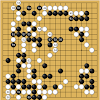The graph above shows what happens to inflation rate when
unemployment rate increases and vise versa. The graph depicts a positive
relationship between the change in inflation rate and unemployment rate of the
Philippines. This means that when unemployment rate increases, change in inflation
rate increases and vise versa.
The data of inflation rate and unemployment rate were
collected from World Bank Data covering year 1981 to 2005. Technically
speaking, the graph is called Phillips Curve in the study of economics. What is
fascinating with the result is that the relationship between the two data
should not be (slight) positive; but, should be negative.
Normally when unemployment rate increases it would follow
that demand for products (goods) and services would decline. Yet, the reverse was
projected by the Philippines data; even though unemployment was increasing,
prices of goods were increasing. It's difficult to imagine that people are jobless and prices of goods and services are increasing.
The reason why price goes up is due to increased in demand
for specific products and services; which is influenced by increased in money
supply (amount of money circulating in the country). The government can
control the money supply to prevent damaging increase in prices of goods and
services using Fiscal and Monetary Policy.
From 2006 to 2012 the trend reversed. The graph above shows
that in the said years, inflation started to respond to unemployment in a good way.
The graph shows that when unemployment rate increases, change in inflation rate
decreases. In other words, price of good decreases (slightly) when unemployment
rate increases. Relatively, it can be said that there was a big difference on how economic policies were implemented on the past compared to recent years.









0 Comments